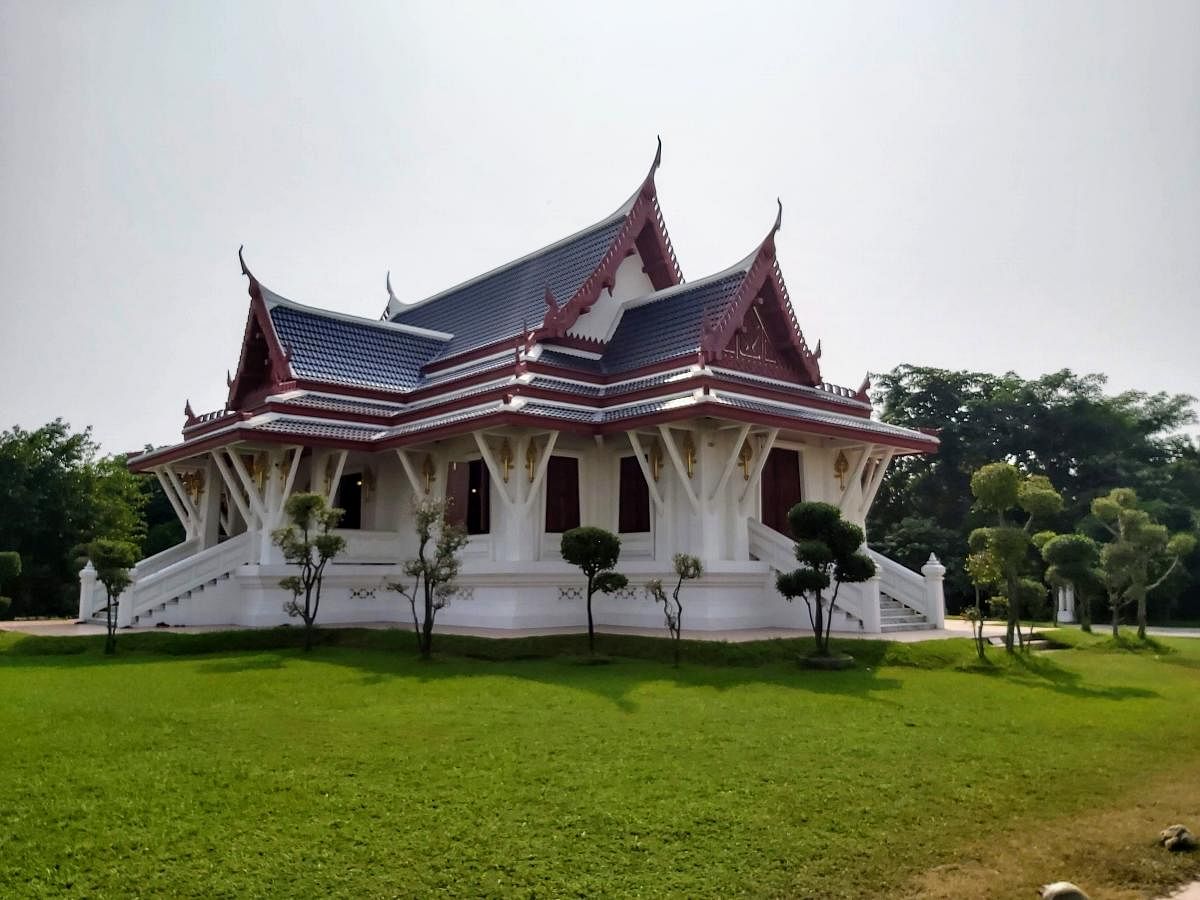
Lumbini was always at the back of my mind not only because of the lilting music the word invokes but also because it is one of the most ancient sacred places in Nepal on the World Heritage Sites list which should be a privilege and an honour to visit. History tells us that Siddhartha Gautama, later recognised as Gautama Buddha, was born in Lumbini in the year 642 BC.
Though Buddhists travel widely, and millions of people visit landmark destinations such as Bangkok and Ayutthaya in Thailand, Nara and Kyoto in Japan, Angkor Thom in Cambodia, Yung-Kang and Lung-Men caves in China, Borodudar in Indonesia, Kandy and Anuradhapura in Sri Lanka and Bodh Gaya and Sarnath in India, Lumbini, surprisingly, attracts far fewer visitors despite its historical importance.
On a recent visit, I realised why it is so. Located in the Terai region of southern Nepal, close to the India border, Lumbini has serious problems of accessibility as well as infrastructure. After completing a trekking programme, when I travelled from Pokhara to Lumbini, the 200 km distance was a back-breaking journey of about nine hours in a rickety bus. The available accommodation was also far from satisfactory.
Indian tourists can access Lumbini by flying into Gorakhpur and then crossing the Nepal border at Bhairahawa after a four-hour drive by road. But, the journey from Bhairahawa to Lumbini, a distance of hardly 20 km, dealing with chaotic traffic along the unpaved and dusty road, can be quite challenging and takes nearly two hours. But, rest assured that once inside the Lumbini garden, the serenity of the place can be truly transformational and a spiritually uplifting experience altogether. The compact heritage site has well-preserved ruins of the past, ancient Bodhi trees, layered brick Stupas, a vast lotus-filled pond and prayer halls where pilgrims draped in crimson robes can be seen sitting in silent meditation; in another part of the garden are spectacularly built gleaming new monasteries by largely Buddhist countries like Myanmar, Cambodia, Thailand, Bhutan, Sri Lanka, Korea, Japan, China as also India, France, Germany and Switzerland, which are finding new adherents to Buddhism.
The pure white structure of Maya Devi temple which houses the exact location where Siddhartha Gautama was supposed to have been born, inspires awe and admiration. There’s invariably a long queue to enter the sanctum sanctorum filled with terracotta slabs dating back to millennia that cover the birthplace. As you close your eyes for a couple of minutes and enter into meditation, the enormity of the place and occasion can send a slender vibration through the veins.
A recent addition is ‘the eternal world peace flame’ which is kept glowing round-the-clock. The flame, which was brought from the United States in 1984 as part of the celebration of the International Year of Peace as a symbol of peace and fraternity in the world, was dedicated at Lumbini garden by the then Prince of Nepal, Gyanendra Shah. The devout Buddhists also visit Tilaurakot, a short distance away from Lumbini, where archaeologists have unearthed the ruins of what is believed to be the place of King Shuddhodana, ruler of Kapilavatsu and father of Gautama. It was here that Gautama lived the life of a prince until he ventured out of the royal compound aged 29 and discovered to his shock the human sufferings for the first time.